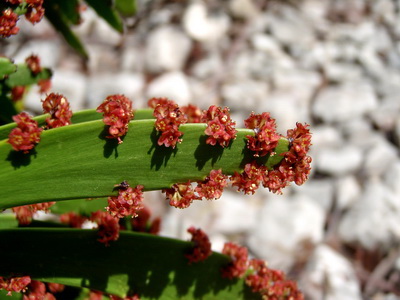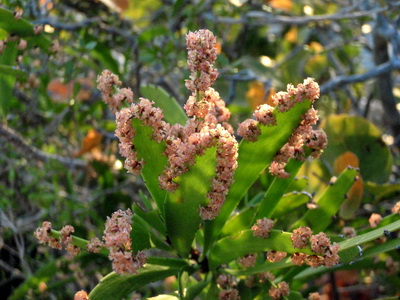
One of the most unique looking flowers that I've seen here in the Turks and Caicos
Yesterday was a rainy and over cast day and in the late afternoon the skies cleared a little. I took my camera and headed out into the bush to see what I could find. The rains had made all the difference and wildflowers were blooming all over. I found this strange looking bush with the most unique flowers and seed pods and with an even more curious name………… Blind Eye Bush.

The creamy flower of the Blind Eye Bush has a long, elongated column that curls back up into the flower.
This bush had flowers in different stages of development along with unusual screw like seed pods a little like cones.

Here are the brown twisted seed pods.
This was a shrub about 5 foot tall and it grows throughout the Bahamas and the Turks and Caicos Islands in coastal and marshy areas. The leaves are in an elongated heart shape often with jagged edges. The reproductive parts of the flowers are at the end of the elongated column.

The long column coming from the centre of the flower, carries the reproductive parts.
I must say that this Blind Eye Bush is one of the most unusual plants I’ve seen. I also saw some beautiful flowering vines…..Jaquemontia, Cynanchum, Wild Alamanda, Milk Pea and Urechites or Devil’s Potato along with Jamaican Trash, Jack Switch, Mosquito Bush, Wild Senna and I also managed to get some close up photos of a Gulf Fritillary butterfly.

Blind Eye Bush with it's showy flowers.
How lucky we are to be surrounded with all this natural beauty. Everywhere I go there’s a photo just waiting to be taken or in my case, hundreds of potential shots!
Marta
http://www.harbourclubvillas.com



































